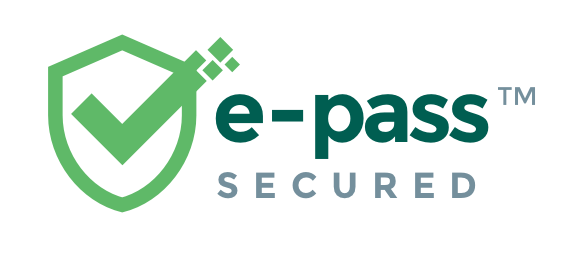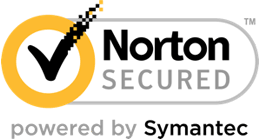question archive Week 2 Discussion 1: Operational and Cultural Components of an Organization For this Discussion, you will explore components associated with the establishment of organizational cultures
Week 2 Discussion 1: Operational and Cultural Components of an Organization For this Discussion, you will explore components associated with the establishment of organizational cultures
Subject:BusinessPrice:16.89 Bought3
Week 2 Discussion 1: Operational and Cultural Components of an Organization
For this Discussion, you will explore components associated with the establishment of organizational cultures. You will distinguish between operational components within an organization and cultural components within an organization. You will also evaluate how each component positively or negatively affects the organization as well as to what extent each component affects the organization.
To prepare for this Discussion, pay particular attention to the following Learning Resources:
Schein, E. H. (2009). The corporate culture survival guide. San Francisco, CA: Jossey-Bass.
- Chapter 4, “Deeper Assumptions”
- Chapter 5, “When and How to Assess Your Culture”
https://www.youtube.com/watch?v=gPqz315HSdg Schein, E. (2016) Edgar Schein explains culture fundamentals.
https://smallbusiness.chron.com/key-elements-business-success-operating-perspective-21234.htmlLacomat, . (2017). The key elements of business success from an operating perspective small business chronicle.
Post a cohesive response based on your analysis of the Learning Resources and your professional experience. In your post you should:
- Delineate the operational components and the cultural components of the organization.
- Evaluate how these components positively and/or negatively affect an organization.
- Assess which operational components (e.g. budgets, training, professional resources) affect the operation the most and the least (be sure to include your rationale).
- Assess which cultural components (e.g. vision, communication, interpersonal relationships between departments) affect the organization the most and the least be sure to include your rationale).
- Evaluate how cultural and operational components of an organization can impact your own leadership effectiveness.
Be sure to support your ideas by connecting them to the week's Learning Resources, as well as other credible resources you have read; or what you have observed and experienced.
General Guidance: Your original post, due by Day 3, will typically be 1 full single space in length, as a general expectation/estimate. Refer to the Week 2 Discussion 1 Rubric for grading elements and criteria. Your Instructor will use the rubric to assess your work.
Week 2 Discussion 1: Operational and Cultural Components of an Organization For this Discussion, you will explore components associated with the establishment of organizational cultures. You will distinguish between operational components within an organization and cultural components within an organization. You will also evaluate how each component positively or negatively affects the organization as well as to what extent each component affects the organization. To prepare for this Discussion, pay particular attention to the following Learning Resources: Schein, E. H. (2009). The corporate culture survival guide. San Francisco, CA: JosseyBass. • Chapter 4, “Deeper Assumptions” • Chapter 5, “When and How to Assess Your Culture” https://www.youtube.com/watch?v=gPqz315HSdg Schein, E. (2016) Edgar Schein explains culture fundamentals. https://smallbusiness.chron.com/key-elements-business-success-operating-perspective21234.html Lacomat, . (2017). The key elements of business success from an operating perspective small business chronicle. Post a cohesive response based on your analysis of the Learning Resources and your professional experience. In your post you should: • • • • • Delineate the operational components and the cultural components of the organization. Evaluate how these components positively and/or negatively affect an organization. Assess which operational components (e.g. budgets, training, professional resources) affect the operation the most and the least (be sure to include your rationale). Assess which cultural components (e.g. vision, communication, interpersonal relationships between departments) affect the organization the most and the least be sure to include your rationale). Evaluate how cultural and operational components of an organization can impact your own leadership effectiveness. Be sure to support your ideas by connecting them to the week's Learning Resources, as well as other credible resources you have read; or what you have observed and experienced. General Guidance: Your original post, due by Day 3, will typically be 1 full single space in length, as a general expectation/estimate. Refer to the Week 2 Discussion 1 Rubric for grading elements and criteria. Your Instructor will use the rubric to assess your work. Name: MMSL_6110_Week2_Discussion1_Rubric Exit Exemplary Very Good Element 1a: Initial Post Operational and Cultural Components of the Organization 5.5 (11%) 5.12 (10.23%) Student provides a thorough and detailed evaluation explaining the operational and cultural components of the organization and evaluates how these components positively and/or negatively affect an organization. Relevant sources and examples support thinking. Student provides a detailed evaluation explaining the operational and cultural components of the organization and evaluates how these components positively and/or negatively affect an organization. Relevant sources or examples support thinking. There are one or two minor details missing. Element 1b: Initial Post Operational Components 6 (12%) 5.58 (11.16%) Student provides a thorough and detailed assessment of which Student provides a detailed assessment of which operational Exemplary Very Good operational components affect the operation the most and the least, including a strong rationale. Relevant sources and examples support thinking. components affect the operation the most and the least, including a strong rationale. Relevant sources or examples support thinking. There are one or two minor details missing. Element 1c: Initial Post - Cultural Components 5.5 (11%) 5.12 (10.23%) Student provides a thorough and detailed assessment of which cultural components affect the operation the most and the least, including a strong rationale. Relevant sources and examples support thinking. Student provides a detailed assessment of which cultural components affect the operation the most and the least, including a strong rationale. Relevant sources or examples support thinking. There are one or two minor details missing. Element 1d: Initial Post - Own Leadership Effectiveness 5.5 (11%) 5.12 (10.23%) Student provides a thorough and detailed evaluation of how cultural and operational components of an organization can impact his/her own leadership effectiveness. Relevant sources and examples support thinking. Student provides a detailed evaluation of how cultural and operational components of an organization can impact his/her own leadership effectiveness. Relevant sources or examples support thinking. There are one or two minor details missing. Exemplary Very Good Element 2a: Written Communication - Initial Post 2.5 (5%) 2.33 (4.65%) Writing is clear, logical, well-organized and appropriate. Work is free from spelling and grammar/syntax errors. Tone is professional and free from bias (i.e., sexism, racism). There are no errors. Writing is mostly clear, logical, and organized. Few, if any spelling and grammar/syntax issues are noted. Overall, a few sections need additional editing, but generally, work appears proofread. Tone is professional and free from bias (i.e., sexism, racism). There are one or two minor errors. Element 2b: Written Communication - Responses to Peers 2.5 (5%) 2.33 (4.65%) Writing is clear, logical, well-organized and appropriate. Work is free from spelling and grammar/syntax errors. Tone is professional and free from bias (i.e., sexism, racism). There are no errors. Writing is generally clear, logical, and organized. Few, if any spelling and grammar/syntax issues are noted. Overall, a few sections need additional editing, but generally, work appears proofread. Tone is professional and free from bias (i.e., sexism, racism). There are one or two minor errors. Element 3a: Relevance - Initial Post 5 (10%) 4.65 (9.3%) Student effectively and directly integrates discussion/assignment Student offers personal experiences, additional research, or current Exemplary Very Good content with relevant and compelling personal experiences, additional research, or current events from credible news sources. Specifically adds a new and/or different insight or perspective on the subject area(s) being discussed or treated in the assignment. events from credible news sources, discussing their relevance, but does not specifically add new or different insights or perspectives on the subject areas(s) being discussed or treated in the assignment. Element 3b: Relevance Responses to Peers 5 (10%) 4.65 (9.3%) Student effectively and directly integrates discussion/assignment content with relevant and compelling personal experiences, additional research, or current events from credible news sources. Specifically adds a new and/or different insight or perspective on the subject area(s) being discussed or treated in the assignment. Student offers personal experiences, additional research, or current events from credible news sources, discussing their relevance, but does not specifically add new or different insights or perspectives on the subject areas(s) being discussed or treated in the assignment. Element 4a: Formal and Appropriate Documentation of Evidence, Attribution of Ideas (APA Citations) - Initial Post 2.5 (5%) 2.33 (4.65%) Student demonstrates full adherence to scholarly or credible reference requirements and adheres to APA style with Student demonstrates full adherence to scholarly or credible reference requirements and adheres to APA style with Exemplary Very Good respect to source attribution and references. There are no APA errors. respect to source attribution and references. There are one or two minor errors in APA style or format. Element 4b: Formal and Appropriate Documentation of Evidence, Attribution of Ideas (APA Citations) - Responses to Peers 2.5 (5%) 2.33 (4.65%) Student demonstrates full adherence to scholarly or credible reference requirements and adheres to APA style with respect to source attribution and references. There are no APA errors. Student demonstrates full adherence to scholarly or credible reference requirements and adheres to APA style with respect to source attribution and references. There are one or two minor errors in APA style or format. Element 5: Engagement in Discussion via Responses 7.5 (15%) 6.97 (13.95%) Responses contribute appropriate and useful ideas and maintain the logical flow of the discussion. There are at least two responses to different colleagues or the Instructor. The student engages in the ideas being shared by comparing posts, sharing a relevant experience, or exploring alternatives. Responses contribute ideas and maintain the logical flow of the discussion. There are at least two responses to different colleagues or the Instructor. The student engages in the ideas being shared by comparing posts, sharing a relevant experience, or exploring alternatives. Some additional detail would have been helpful.









